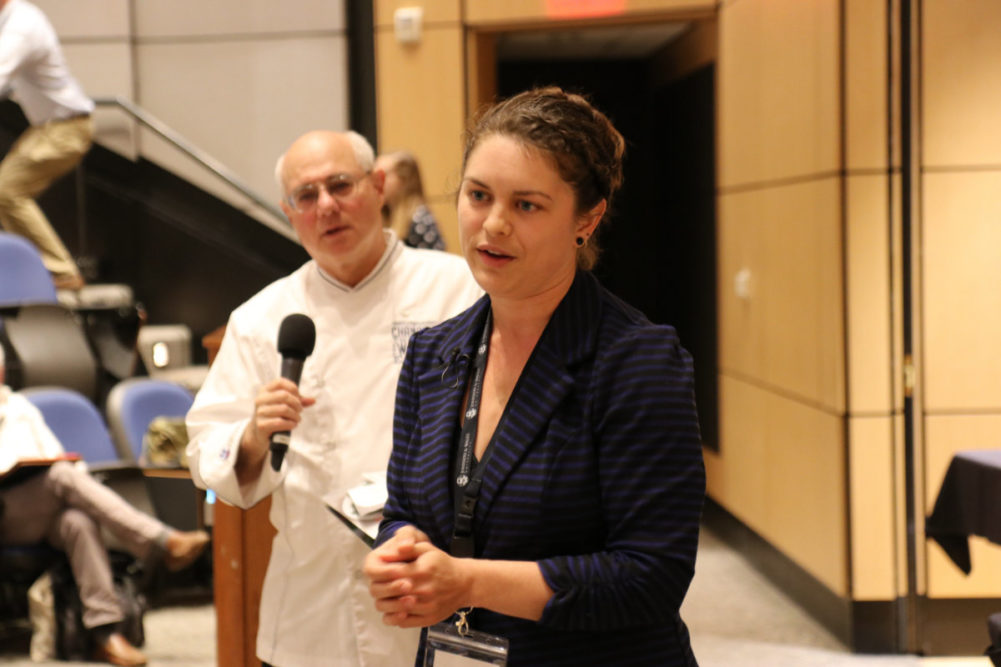There are millions of kinds of bacteria and fungi on Earth. Yet if you mix flour and water, the community of organisms that colonize the resulting concoction is almost always composed of a small handful of organisms that are able to leaven bread, yielding a sourdough starter. How this happens is one of civilization’s great mysteries, a mystery at the heart of bread making.
For tens of thousands of years, humans have made bread. For nearly 200 years (or possibly more), Americans have made sourdough bread. Boudin French Bakery, original maker of San Francisco sourdough bread, formed in 1849, and all of Boudin’s sourdough bakery products are made from the same mother dough. Back then, people who became known as 49ers rushed to northern California to mine for gold. It’s believed that Isidore Boudin received the mother dough from one of these 49ers. The starters were so important that they would cuddle them on cold nights, so the yeasts and bacteria that made them viable didn’t die, according to San Francisco Travel writer Avital Ungar. These intelligent miners became known as “sourdoughs.”
Some bakers suggest that the biggest factor influencing which species of microbes are found in a sourdough starter are the microbes that are on the bodies of the people who started it. Some say it is the grain that is used. Others, the climate. Others still, the water. Everyone may be right, according to biologist Rob Dunn at North Carolina State University.
“Sourdough is deeply embedded in human history. For tens of thousands of years, we have been basing our culture on microbial ecology,” says Erin McKenney, Ph.D., a postdoctoral researcher at North Carolina State University. “Inside, you are teaming with superhero sidekicks your entire life. We have the opportunity to empower anyone in the world and push the boundaries of science. We want to take a roll call of all these bacteria.”
At the 2019 International Symposium on Bread, McKenney presented the latest results from the Citizen Science Sourdough Project and discussed the importance of the world we don’t see — the world of microbial systems — and how it shapes who we are. In the project, a total of 571 participants from 17 countries sent in sourdough starters. Many packages — shipped by air — were inflated like balloons.
“Having these cultures gives us the ability to do experiments with them. We got the DNA sequencing back two years and curated the metadata,” she said. “We identified over 70 types of lactic acid bacteria. We had all this diversity from across the globe. When we turned to the microbes themselves, we took the five most common bacteria and the five most common yeasts.”
Some are smooth. Others are “wrinkly,” as she described them. There was a big block of Lactobacillus sanfranciscensis.
Initially it was thought that San Francisco was the only place where San Francisco sourdough bread could be made because the foggy climate cultivated this specific type of yeast. Local bakers, including Boudin, swore that no one could reproduce it outside a 50-mile radius of the city. Eventually named Lactobacillus sanfranciscensis, the bacteria is not unique to the San Francisco region; it has since been found in France and Germany, among other places. Some bakers still insist that true San Francisco sourdough has to be made there, where the climate and the wild yeasts in the air are specific to the region. Others claim the exact ratios of different kinds of yeasts and lactobacilli don’t matter as much because it’s more about technique.
“Sourdough has so much flexibility, depending on time, temperature, flour and shaping,” says Sarah Owens of Ritual Fine Foods, New York City, and author of “Sourdough: Rustic Fermented Breads, Sweets, Savories, and More.”
Another part of this story involves America’s increasing fascination with fermented foods. According to data from Upserve, a restaurant management platform, consumption of fermented foods rose an astounding 149% in 2018.
Craft bread bakers are learning from the craft beer industry, in particular, that today’s consumers want more choices of unique flavors that feel close to home.
Using “flavor juice,” McKenney and her team of researchers added one type of bacteria or yeast to a test tube and evaluated the number of cells growing. “The more cells that are growing, the less light shines through. Then we plot the growth curves. By comparing two at a time, we started to find a family tree of sourdough starters, based on similar microbial communities.”
The researchers identified 15 clusters. “They are simple and distinct and have very little to do with humans. Now we realize we have no control over the food growing in our microbial system.” For the next step, researchers will look at how these clusters influence flavor and the end product. “Perhaps someday the world will have trained sourdough sommeliers,” McKenney said. “My hope is that through all these techniques, we will discover not only who is living in these communities, but what their resumes are.”




